Chandra X-ray Observatory/Hubble Space Telescope/Spitzer Space Telescope, 7 January 2016. Image Credit: X-ray: NASA/CXC/University of Missouri-Kansas City/M.Brodwin et al; Optical: NASA/STScI; Infrared: JPL/CalTech
The cool core of a cluster
Galaxy clusters are the largest objects in the Universe that are bound together by gravity, and astronomers think they take several billion years to form.
This specimen, named IDCS J1426, was one of the earliest massive structures to form in the Universe and is located some 10 billion lightyears from Earth.
As a result, astronomers are observing the galaxy cluster as it existed when the Universe was only about 3.8 billion years old.
The cluster weighs the same as 500 trillion Suns, and data from Chandra has revealed that about 90 per cent of its mass is made up of dark matter.
Chandra’s X-ray vision has also detected a core of gas within the galaxy cluster, as seen in blue at the centre of the image.
However, this gas is not actually at the centre of the cluster itself, suggesting IDCS J1426 has collided or interacted with another galactic system recently, causing the core of gas to move about and become offset.
In this composite image, visible light is seen in green by the Hubble Space Telescope, with infrared data in red detected by the Spitzer Space Telescope.
Burning bright blue
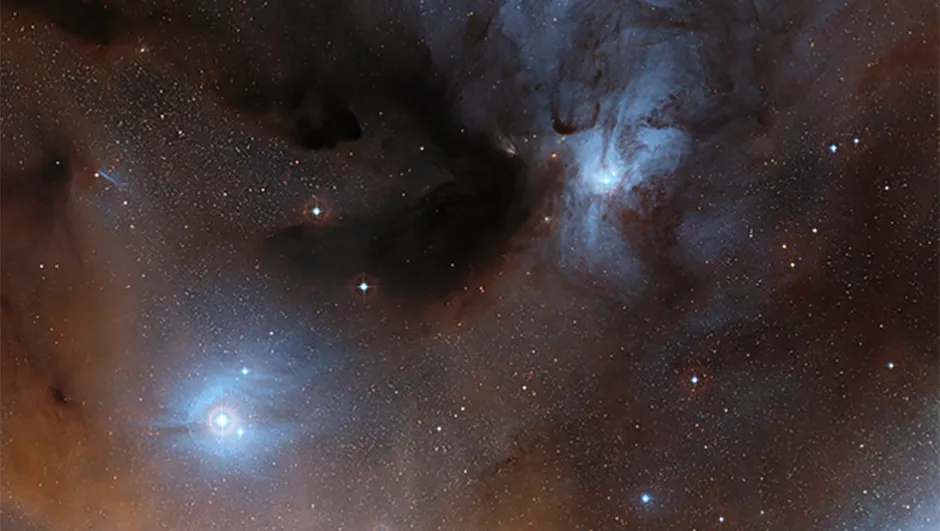
This dynamic colourful region is in the constellation of Ophiuchus and is bursting with star-forming energy.
The blue haze is the fiercely hot glow of young stars, while the darker areas show not an absence of stars, but rather thick clouds of cosmic dust blocking light on its way to Earth, rich in the materials needed for new stars to be born.
Mapping the solar atmosphere
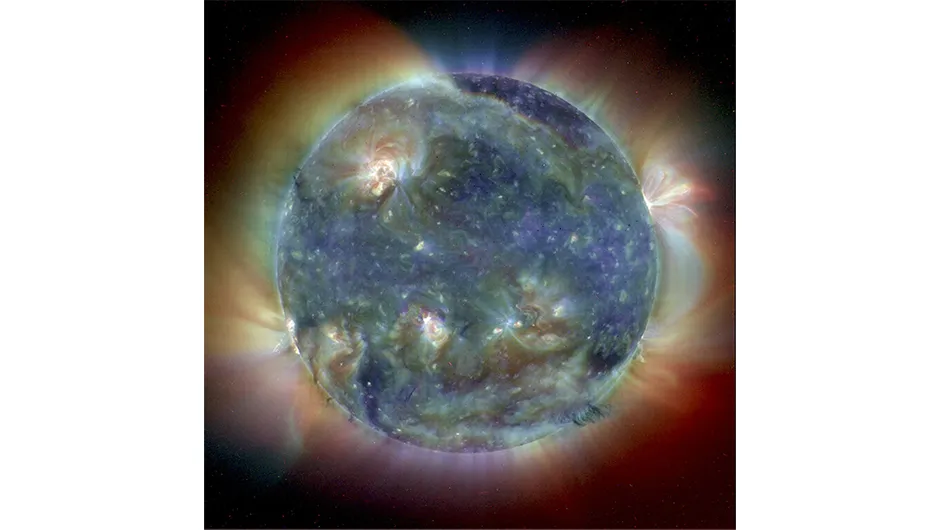
The Solar & Heliospheric Observatory (SOHO) is a joint project between ESA and NASA to study the Sun in detail.
This image shows the Sun in three different wavelengths to highlight the varying temperatures of gas in its atmosphere.
The temperature is detected by analysing the iron atoms present in the corona; the outer layer of the solar atmosphere.
Blue shows iron at a temperature of one million °C, yellow at 1.5 million °C and red at 2.5 million °C.
Tim’s lunar shot
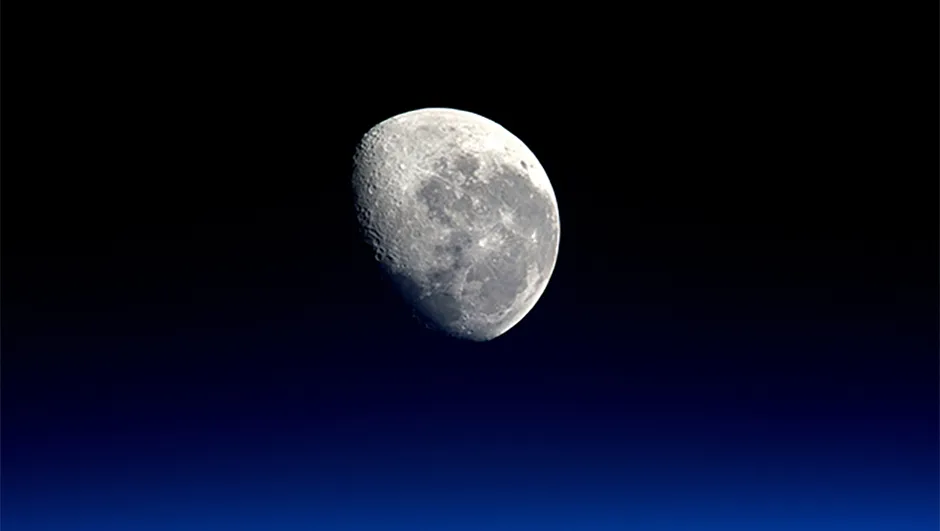
Many astrophotographers are prepared to traverse the globe in search of that perfect shot of an elusive or fleeting night-sky object, but what better vantage than the International Space Station, orbiting over 300km above Earth?
This image of our Moon was captured by British astronaut Tim Peake during his Principia mission on board the ISS and, of course, was shared with his many followers via social media.
Mercury’s passing phase
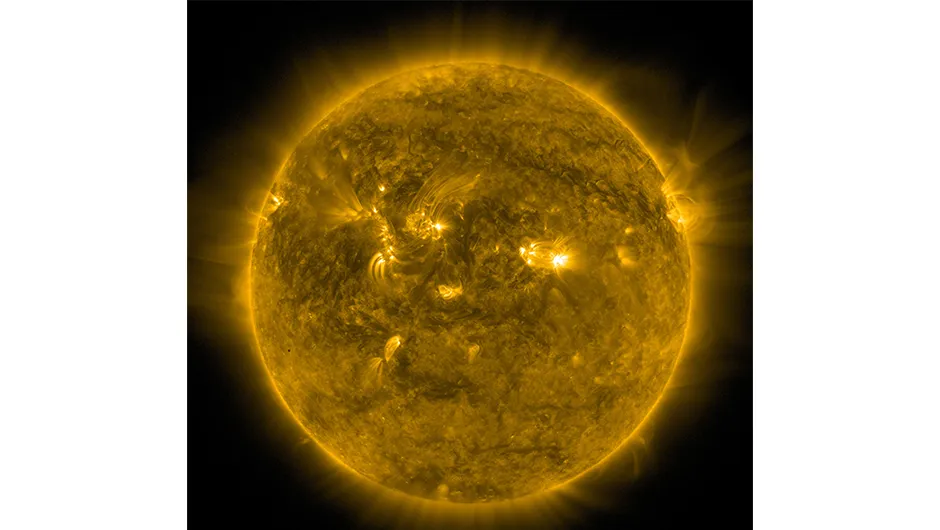
On 9 May, Mercury passed in front of the face of the Sun in an event known as a solar transit.
This rare occurrence was captured by astronomers and observatories around the world, including by NASA’s Solar Dynamics Observatory (SDO) spacecraft orbiting Earth at over 11,000km per hour.
The image of the transit seen here is the work of SDO’s Atmospheric Imaging Assembly (AIA), which documents changes in the solar corona by taking images of at least 1.3 solar diameters in multiple wavelengths.
It was captured at 11:55 UT and shows Mercury at the beginning of the transit, appearing as a small dot on the left side of the solar disc.
If it were Earth transiting instead, it would still only appear a fraction larger than Mercury does, reminding us just how tiny our planet is in the context of the Universe.
While transits afford amateur astronomers and astrophotographers the chance to view and image a rare occurrence, they can be used by planet hunters to detect exoplanets orbiting stars outside our Solar System.
Once a distant star is spotted, astronomers observe it over a long period to see if there is a regular dip in its brightness, potentially indicating the presence of an undiscovered transiting planet.
The gas giant
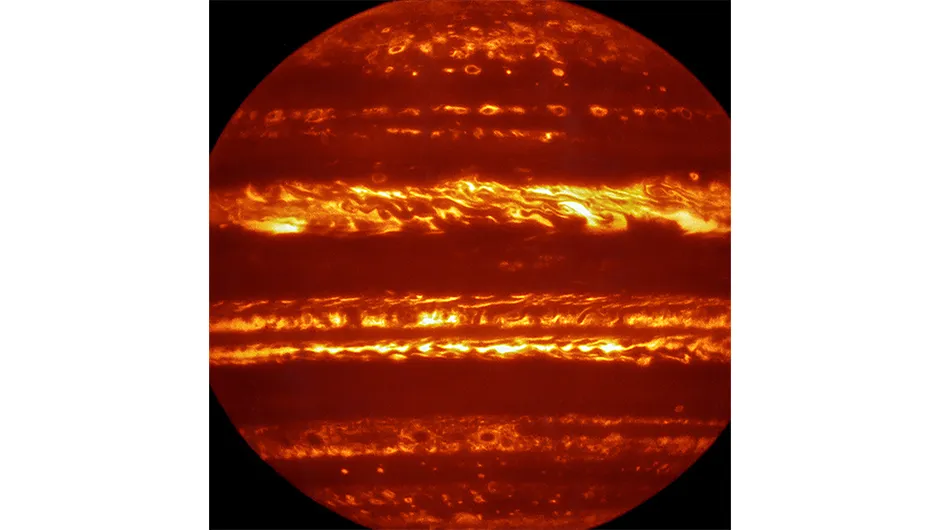
NASA’s Juno spacecraft arrived at Jupiter in July, beginning a new mission to study the gas giant.
Ahead of its arrival, ESO’s VLT instrument captured this infrared image of its stormy atmosphere, showing cool gas clouds in bright yellow and white.
The image was created using a technique known as ‘lucky imaging’, in which multiple short exposure images are captured to produce thousands of individual frames.
The lucky frames – those least affected by Jupiter’s turbulent atmosphere – are pieced together to produce the final image.
Starburst mystery
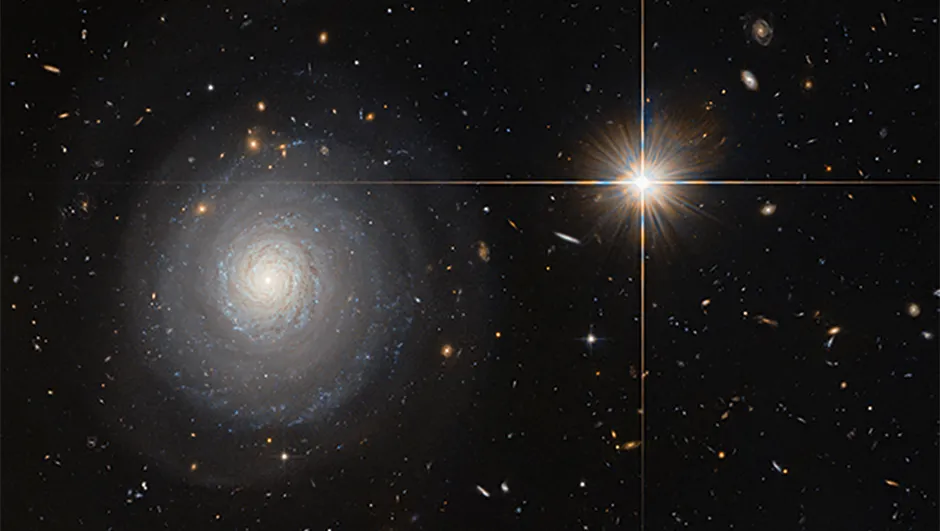
The life cycle of a galaxy is relatively predictable: it ages, runs out of the cosmic gas and dust required to produce new stars, and peters out.
But sometimes galaxies go through what is known as a ‘starburst’, when their rate of star formation is increased dramatically, usually a result of interaction with a nearby galaxy.
Galaxy MCG 07-33-027 is currently going through a starburst period, but as it is an isolated body far from any other galaxies, astronomers cannot yet work out what has caused this sudden burst in activity.
Cassini’s cloud capture

Saturn’s clouds drift across its northern hemisphere in a false-colour view by the Cassini spacecraft that looks something akin to oil floating on water.
It was taken by Cassini’s wide-angle camera using filters sensitive to infrared light, and the data was processed by Kevin M. Gill of NASA’s Jet Propulsion Laboratory.
The filters used by Cassini enable scientists back on Earth to measure and analyse cloud structures in the ringed planet’s atmosphere.
The birthplace of stars

Stretching over 150 lightyears across, N159 is a hotbed of star formation known as a stellar nursery because it contains all the right ingredients, such as cosmic gas and dust, needed for stars to form.
The young stars glow with intense heat and emit ultraviolet light that illuminates the surrounding gas and makes it glow.
These stars also emit streams of charged particles from their upper atmospheres called stellar winds, sculpting and shaping the surrounding gas and carving dark patches and filaments into it.
Radiation from these stars ionizes the hydrogen gas, leading astronomers to refer to cosmic clouds like N159 as ‘H II’ regions. Such regions can give birth to thousands of stars over millions of years and are incredibly active during this period.
However, as the stars grow and age, many will eventually explode as supernovae or grow so massive that their strong stellar winds disperse the surrounding gas cloud, causing it to expand into space.
Getting to the source
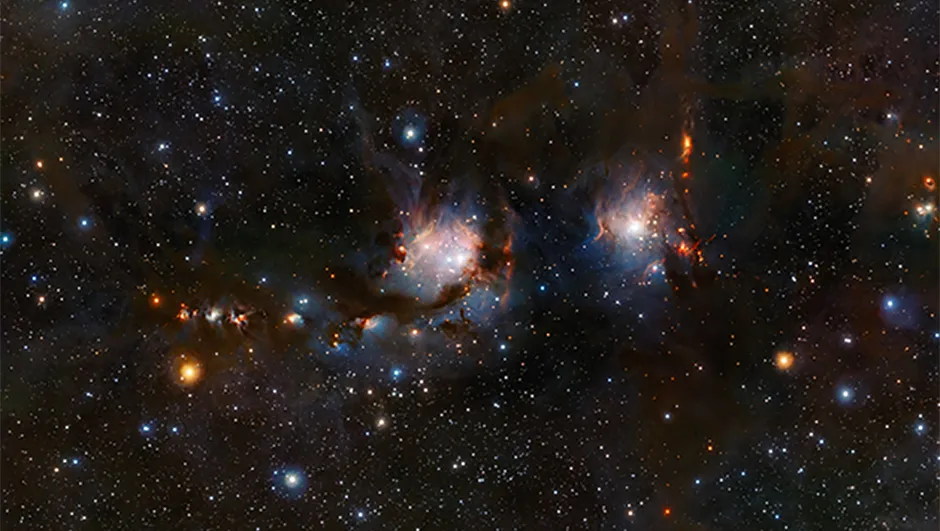
The next time you stare at the constellation of Orion with the naked eye, think of this image of reflection nebulae Messier 78 and NGC 2071.
All this activity is occurring just above and to the left of the three stars that form the hunter’s belt, albeit out of the view of most observers!
Reflection nebulae are caused by the heat and energy of young stars illuminating clouds of gas and dust to create a beautiful glow. Messier 78 can be seen in the centre of this image, while NGC 2071 is the cloud on the right.
Even if we could observe this region with our own eyes, most of what is seen here would be invisible to us, as the stellar light would be blocked on its way to Earth by thick swirls of space dust.
However, this image was captured with the European Southern Observatory’s Visible and Infrared Survey Telescope for Astronomy, which is able to see through the dust due to its near-infrared observing capabilities.
As a result, the telescope reveals the stellar sources of the reflection nebulae: at the centre of M78 are two supergiant stars, HD 38563A and HD 38563B, and at the centre of NGC 2071 is supergiant star HD 290861.
A multitude of stars also surrounds the two nebulae in the image, including massive young blue specimens that glow incredibly brightly.
Cooler red and yellow stars that have just begun forming will eventually grow in intensity to become like their blue companions, providing more light and energy to keep M78 and its nebula companion shining.
The destructive birth of stars
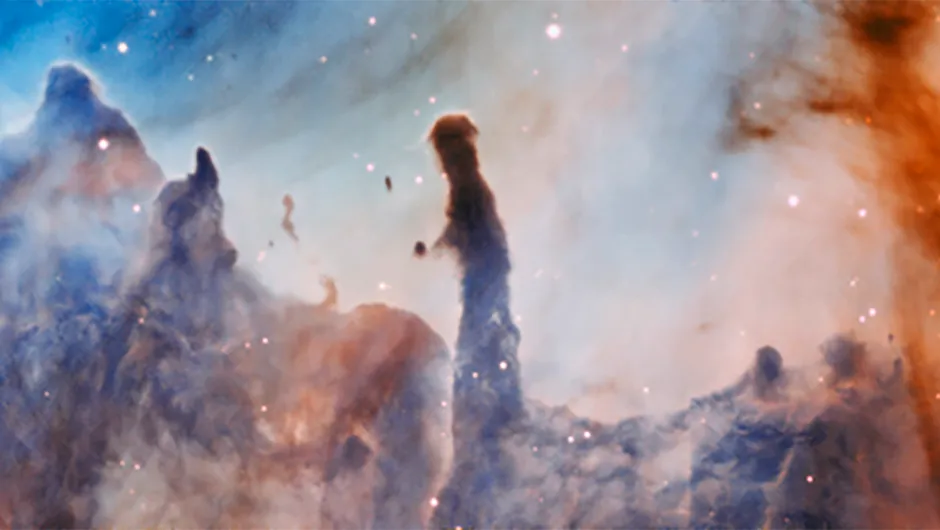
The pillar-like structures seen in the Carina Nebula are made out of cosmic gas and dust that feeds newborn stars and helps them grow.
However, observations using the Very Large Telescope’s MUSE instrument have revealed a correlation between the amount of radiation given off by newborn stars and the rate of destruction of the pillars.
In other words, young stars are helping to destroy the very same dusty pillars out of which they are born.
Central bar
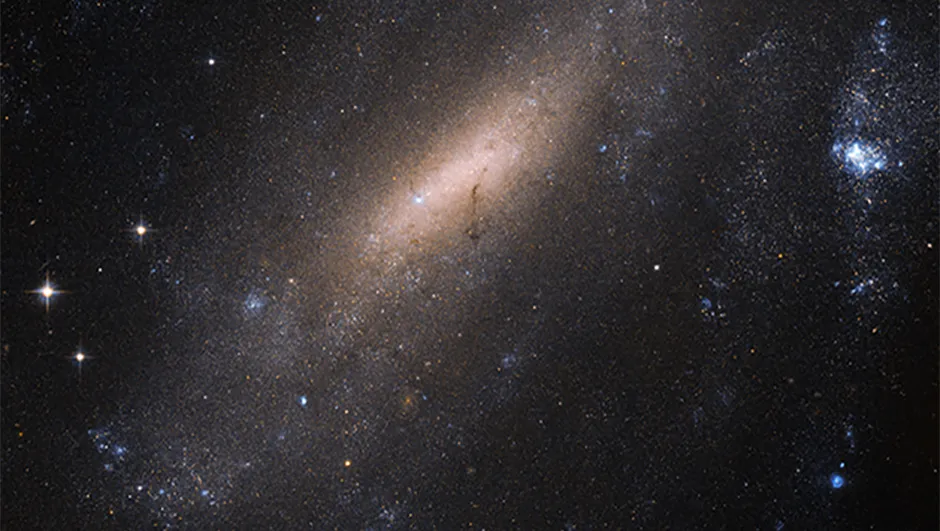
Galaxy IC 5201 is a barred spiral galaxy 40 million lightyears away that was discovered in 1900 by astronomer Joseph Lunt at Cape Town Observatory in South Africa.
The Hubble Space Telescope has managed to resolve individual stars to an incredible degree, bringing out the beauty of the galaxy.
About two thirds of spiral galaxies we know of contain a ‘bar’ of stars extending through their centre, meaning barred spiral galaxies such as this are a common phenomenon across the Universe.
